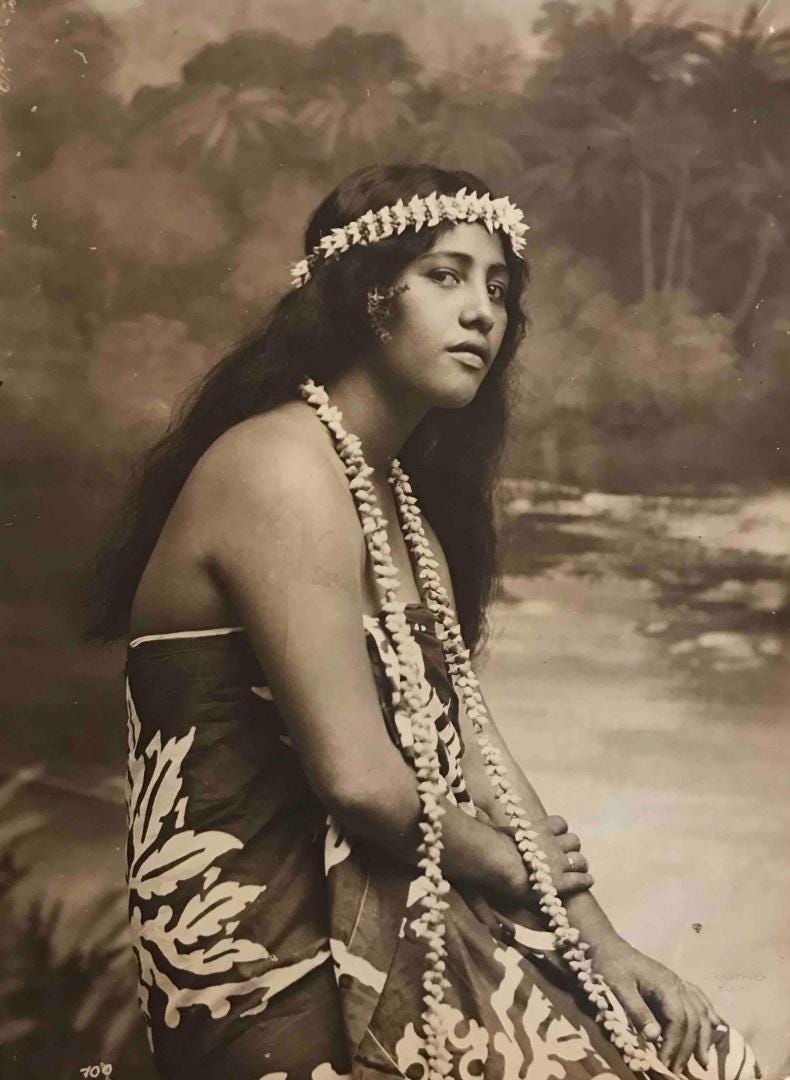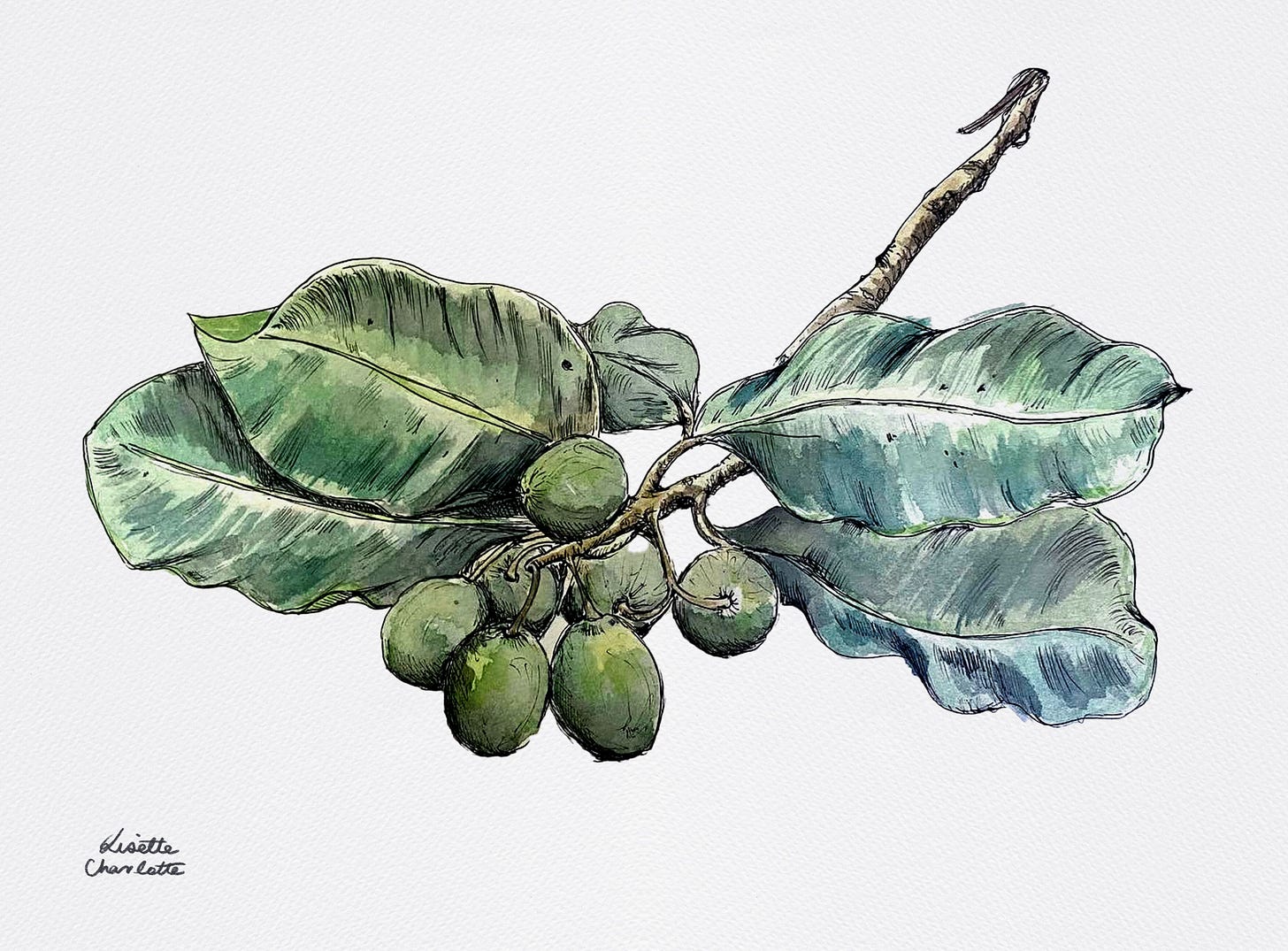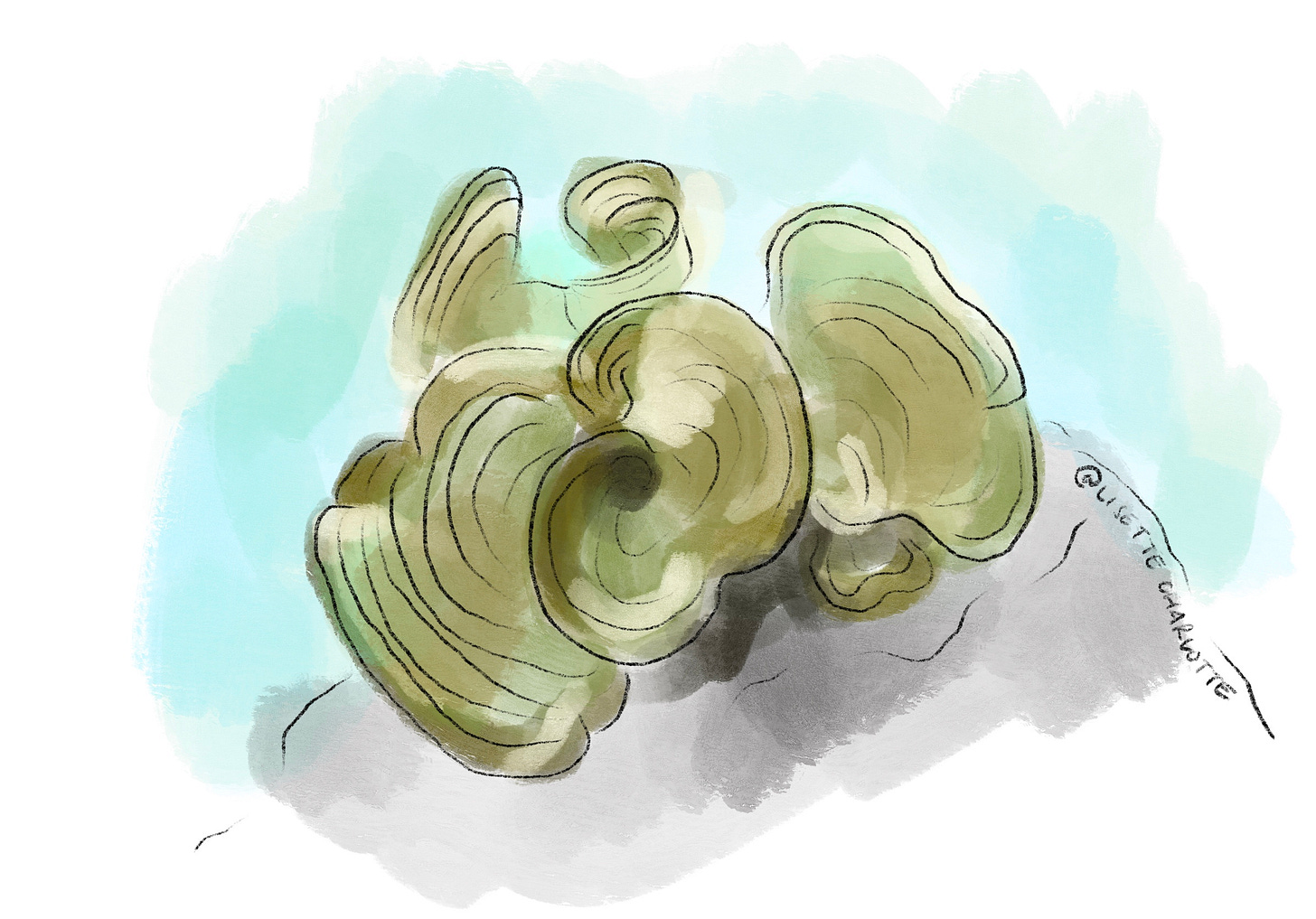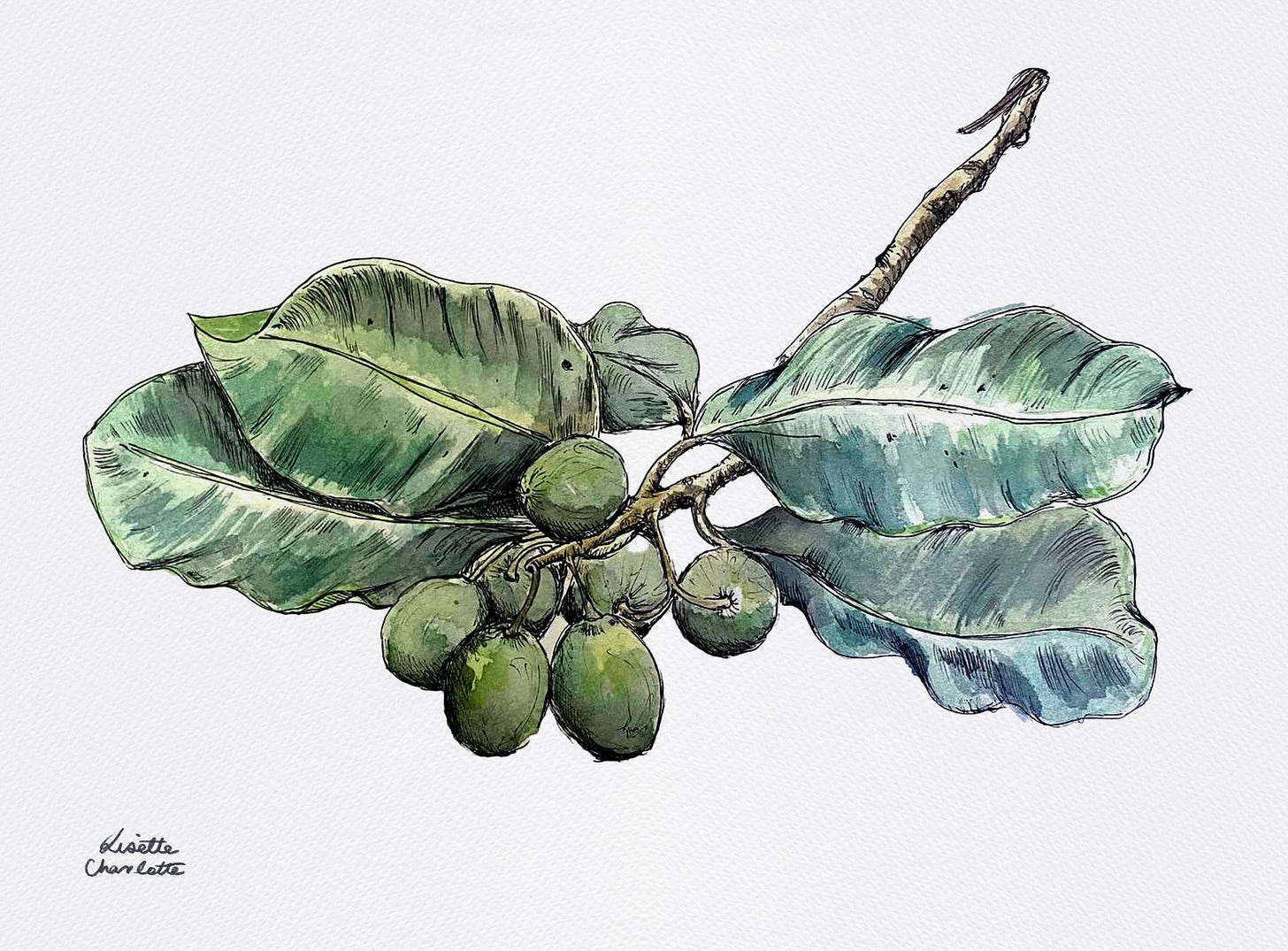3 health and beauty secrets of the Tahitians
And how I discovered the number 1 secret to youthful skin...
“We have three Korean guys who desperately need our boat.”
“Huh?” I respond, still packing my mask and snorkel into my backpack. We’d planned a short outing with the family to do some snorkelling on the reef.
“Apparently they need video footage of a particular type of seaweed,” Martin responds and shrugs. “We’re going to take them out to search for it on the boat.”
Turns out our three new friends were from the third largest skincare brand in Korea. They’re currently on a mission that will eventually span 40 different countries, getting footage of the different ingredients that go into the skincare, each ingredient growing in the natural environment.
The ingredient in Tahiti and Mo’orea that they’re looking for is a seaweed called Padina, and looks a bit like a bunch of lettuce that’s gone bad in the fridge. It grows a bit everywhere.
The challenge? Getting a shot that includes the Padina, turquoise water, and a beautiful, sunbathed island in the background when the weather is not exactly cooperating.
It doesn’t surprise me that their travels bring them here. There are many things in the islands that are touted for their natural health and beautification benefits. And looking at the historical photos of the Tahitian women and men with their luminous skin, luscious hair, and bright smiles, one can’t help but wonder what their secret is (apart from good genetics).

Here are just three of the things I’ve discovered that Tahitians use for radiant health and beauty.
Mono’i
If there’s such thing a magic elixir, it’s got to be mono’i. Mono’i has been used for religious, medicinal and and beautification purposes by the Polynesians for centuries.
Mono’i is made by extracting the oil from coconuts dried in the sun. While traditionally tiny hermit crabs have been used to speed up the process of fermentation, this step is skipped for a lot of the modern manufactured mono’i. The coconut oil is combined with tiare flowers, picked before they are fully open, and steeped for 15 days.
Mono’i is known for its hydrating and soothing properties for the hair and skin. It can be used:
To protect the skin from the sun and salty sea water
As a daily skin moisturiser
As a tanning lotion
As a hot oil treatment for the hair
To de-frizz and moisturise dry hair
As an after-sun treatment
As a massage oil
Some mono’i is flavoured with other local plants and herbs, such as vanilla, ylang-ylang, pitate flower (similar to jasmine) and sandalwood.
I go through A LOT of mono’i, as I use it every day on my skin and in my hair. I’m swimming in the lagoon most days and the salt and the sun dries me out.
You’d think putting coconut oil in my hair everyday would make it look oily, but most of the time it just looks shiny, which is what has convinced me this stuff is a bit magic!
Tamanu
Tamanu oil comes from the nut of the tamanu tree, and is exported around the world to be used in anti-ageing products. Apparently this wonder-ingredient stimulates collagen and antioxidant production in the skin, reduces inflammation, and has anti-bacterial properties.
These trees were planted around the sacred sites (called marae) and according to this website the oil is often used in traditional Polynesian tattooing, to reduce inflammation and infection.
It can be used:
To treat skin conditions such as eczema and psoriasis
To treat dandruff and dry scalp
As a hair treatment
To moisturise the skin and reduce acne
As an anti-ageing treatment
To stop mosquito bites itching
On wounds and burns to encourage healing and reduce the likelihood of infection
To reduce scarring and stretch marks
To relieve sunburn
I had a really gross infection from scratching myself on some corals. Daily application of tamanu oil not only got rid of the infection, but cleared up the scar in no time.
Noni
The noni tree is not the sexiest looking tree you’ve ever seen. The fruits are these misshapen, lumpy ovals, pale yellow in colour, with brown dots all over.
The best part? When perfectly ripe, they smell like unwashed feet.
It’s been described as ‘the blue cheese fruit’ due to it’s funky odour, but this ugly fruit (and the tree that grows it) is packed full of health benefits.
All parts of the noni tree are used in traditional medicine. The leaves can be used to heal bruises, wounds and burns, the bark can be used for treatment of bacterial infections and stomach issues such as diarrhoea, and the flowers for eye irritation and issues such as conjunctivitis.
The juice of the noni fruit can be used:
As a de-worming and anti-parasitic tonic
As a cancer preventative
To fight viruses and colds
To boost immunity
To reduce fever and infection
To treat arthritis
To treat depression
To get the juice, you put a bunch of ripe noni into a glass jar and leave it to ferment in the sun. The juice will collect at the bottom. Then, you collect the juice, pinch your nose, and bottom’s up!
The number 1 anti-ageing secret, according to our Korean friends
Back to our friends, who bought us lunch as a thank you for using the boat. When you have the CEO of a massive skincare brand sitting in front of you, you’ve got to ask the hard hitting questions, right?
Aurelie wanted to know, what’s the number 1 secret to having youthful looking skin.
Their answer?
Sunscreen. Every day, every single day, you have to apply that sunscreen. You can use all the skincare products you like, but nothing will be anywhere near as effective as a simple daily sunscreen.
Reading, watching, thinking about…
According to this guy, early if you’re poor, late if you’re rich!
Anyone who knows me knows I’m a sucker for a period drama. I’m currently watching my way through Sanditon season 2, which is entertaining, even if not particularly historically accurate. As a result, I’m super interested in what life was like, down to the minutiae of how people ate, dressed, spent their day.
I really want to try these Bath buns now.
Great soundtracks
I think I’m showing my age, because I didn’t even think about Triple J’s Hottest 100 this year (I don’t know who half these people are), but I will 100% listen to ABC Classical 100: Music for the Screen.
This playlist is a good go-to for me to discover soundtracks I might not have known about. They do it every year, but I could only find the 2022 countdown on Spotify:
Tortilla Flat by John Steinbeck
The first on my big list of book to read this year based on recommendations from others, and it’s a charmer. Also available online for free!










I just find this type of article fascinating! ❤️ and love the illustrations, as always